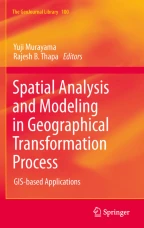
Though enrolment by proximity is an official educational policy in Iran, the lack of clearly defined school attendance areas has resulted in an informal open enrolment system where parents may choose public schools outside their residential areas. Two major consequences of parental choice are longer commutes to schools and increased use of motor vehicle transport. To delineate school attendance areas for public female junior high schools in the city of Rasht in Northern Iran, this research used the multiplicatively weighted Voronoi diagram (MWVD) technique to construct school attendance areas. The approach was shown to be useful in developing countries like Iran where accident fatalities are not only disproportionately high but the public school system lacks sufficient educational diversity to offset the societal costs of opting out of neighborhood schools. A GIS-based specialist package was used for constructing the proposed school attendance areas. Given the MWVD utility in demarcating spaces so that all journeys within them are closest to a chosen point, the research concluded that proposed school attendance areas can result in shorter and more convenient commutes on foot for students. This can eliminate the need to travel by vehicle for the overwhelming majority of students and thus make their journeys more convenient and safer.
This chapter is improved from “Fatemah Ahmadi Nejad Masouleh, Yuji Murayama, and Todd Wendell Rho’Dess (2009), The application of GIS in education administration: Protecting students from hazardous roads, Transactions in GIS, 13, 105–123”, with permission from John Wiley and Sons.
This is a preview of subscription content, log in via an institution to check access.